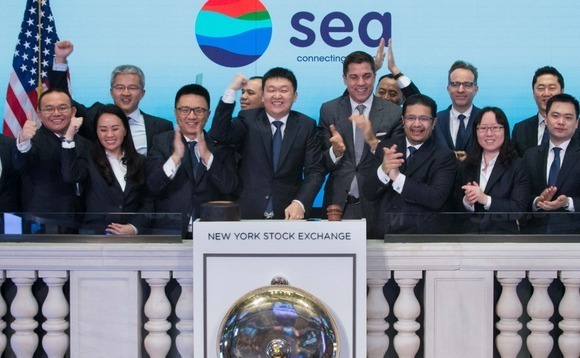
Southeast Asia IPOs: Opportunity knocks

A breakthrough offering in Indonesia and regulatory progress in Singapore highlight Southeast Asia’s growing viability as a tech IPO market. It’s unclear how well this is being communicated globally
From 1990 to 2000, Indonesian tech and telecom companies – excluding fintech, logistics and media – raised 55% of their IPO proceeds in the US. Between 2001 to 2018, that fell to 0%.
The single largest factor in the drop-off is the volatility around the Asian financial crisis, although there have also been significant tax incentives for Indonesian companies to list onshore. Still, another underlying theme should not be underestimated: the nature of what it means to be a "tech" company has changed.
As the country, along with the rest of Southeast Asia, transitions from traditional industries to a more digital and internet-driven economy, global investors will need to re-learn what makes this market tick. The best indicator that such a rediscovery may be underway came in August, when local e-commerce leader Bukalapak raised an IDR21.9 trillion ($1.5 billion) IPO on the Indonesia Stock Exchange.
Bukalapak is a guinea pig on a conservative exchange that eschews pre-profit companies, and its ongoing success is seen as critical to the outlook for local start-ups. If the first few quarters are about figuring out the earnings profile and what kinds of investors are the right fit, this experiment in modernizing the IPO market could be seen as a microcosm of a broader ASEAN story.
The stock has ticked down 22% in the meantime, giving the company a market capitalization of IDR70 trillion and knocking it out of Jakarta's top 20, but spirits are still high. Eddy Chan, a founding partner at Indonesia's Intudo Ventures, not a Bukalapak investor, sees the decline as part of a natural learning curve and continues to track a palpable uplift in ecosystem morale.
"To see Bukalapak receive the reception it did has been extremely encouraging, and we really have to give the government and the exchange regulators a lot of credit," he says. "They aggressively deregulated the exchange to allow for more technology listings and loosened the profitability requirements. That really rewards the consumer base for homegrown businesses. You want your stakeholders – your customers – to have a piece of these companies and a say in their future."
Chan recalls few institutional investors took him seriously when he championed IPOs as an exit option in 2017-2019. The turnaround in sentiment is palpable – reflected in Intudo's relatively swift fundraise this year and in greater confidence among portfolio company founders. Inbound inquiries from international stock exchanges and special purpose acquisition company [SPAC] sponsors are increasingly common.
Sea-ing is believing
Bukalapak's story is mostly inspirational as a proof-of-concept for Southeast Asian unicorns going public, although not necessarily on a regional exchange. Grab, PropertyGuru, and FinAccel, have all agreed to merge with US-listed SPACs. Meanwhile, GoTo, the recent merger between Gojek and Tokopedia, has pushed back its plans for a Jakarta listing to wait for regulatory changes that would provide more flexibility around founders' voting rights. The company also expects to list in the US.
There are a lot of question marks around this pending activity, not least because the incentive structure of SPACs has tended to result in disappointing post-float performances. The only other major consumer technology IPO in the region to date is Sea, a mobile internet and gaming platform that raised $884 million through a US offering in 2017. It is the largest-ever IPO by a Singapore company.
At the time, Sea's operations were limited to Southeast Asia, including Taiwan. Investors had to improvise their valuation processes for the company with theoretical comparables, from China's Alibaba Group to Argentina's Mercardo Libre.
"There's a misconception that it's nearly impossible to build a regional business in Southeast Asia. Sea, a $190 billion public company, is precisely that; Grab, a $40 billion soon-to-be public company, is precisely that. If it walks like a duck and quacks like a duck, sooner or later, you're going to have to call it a duck," says Nick Nash, a co-founder of Asia Partners and formerly president of Sea.
"There's nothing as credibility building as one solid case study. Sea is the best performing large-cap stock on the planet by IRR, so it's emblematic of Southeast Asia's moment. It also validates the idea of Southeast Asia continuing the IPO roadmap that China has built out. In many ways, that playbook is predictive of what's going to happen in Southeast Asia, about 10 years behind China."
A significant part of Asia Partners' brand promise to its portfolio companies involves helping list in the US. Malaysian used car marketplace Carsome, for example, plans to do that within 12 months at a valuation of $2 billion and has fielded overtures from SPACs as part of the process. Meanwhile, RedDoorz, a pre-profit investee in the hotel booking space, is contemplating an IPO within Southeast Asia by 2023, although the exchange has yet to be decided.
While it seems likely Carsome can follow in the footsteps of Sea, the prospects for RedDoorz replicating Bukalapak's journey are less certain. And this is to say nothing of the challenges facing the hotel industry due to COVID-19.
Southeast Asia's regional exchanges have recognized the value in consumer businesses during the pandemic and have, in some cases, demonstrated significant liquidity. Bourses in the Thailand and the Philippines are on track for record years in 2021 in terms of capital raised. But there is a conspicuous void in digital, new-economy models going public on local exchanges.
Bureaucratic obstacles
Profitability and size requirements are generally flagged as the main regulatory sticking points, although for the unicorn set, there is a sense that listing rules in Southeast Asia are becoming flexible enough to accommodate companies with technology growth profiles.
However, the fact that listing rules in the region come from a place of protecting small shareholders makes all the difference. For example, the most persistent deterrent for investors is a penchant for extended lock-up periods, which are imposed on newly listed companies even when their cap tables and balance sheets are strong enough to ensure they will remain a going concern for years.
"The other gap is that the key anchor public market funds – the mutual funds, pensions and sovereigns – and the bankers running the processes need to give more comfort that they actually want these kinds of companies in the local public markets," says Yash Sankrityayan, a principal at Jungle Ventures, an investor in FinAccel and RedDooz. "That includes regulators and bankers helping start-ups navigate the compliance and administrative requirements of being a public company."
Recent developments on this front in India are hoped to bleed into Southeast Asia, especially if Bukalapak holds steady as the likes of Grab and GoTo come to fruition. This will be a process of cultural osmosis, rather than regulatory copycatting.
It is unlikely that the recent rule changes resulting in India's current IPO boom – which effectively greenlight unprofitable companies – will be rapidly adopted across ASEAN. But they could help inform less ambitious liberalizations as well as concerted government-backed attempts to get local champions over the line.

"What's happening in India recently, in addition to the evolution we've seen in the Hong Kong and Australia exchanges, is impacting regulators in Southeast Asia, mostly in a positive way. They will start a bit more conservatively in Southeast Asia, but they will be able to learn from the successes and loopholes they see in those other systems," Sankrityayan says.
"If they can define the guidelines and guardrails, start-ups and investors will have a way to understand how they fit within them and plan their capital market journeys in a more predictable manner."
Singapore's latest gambit to define guidelines and guardrails has focused on the SPAC opportunity, although it remains to be seen how much liquidity appreciation there is for assets of this kind locally. The consensus among industry professionals is that small to mid-sized companies could begin to list via SPAC in about six months, but major events the likes of Grab are not in the foreseeable future.
Hwee Ling Tay, disruptive events advisory leader for Southeast Asia and Singapore at Deloitte, observes that for companies with a track record of profitability and widely understood business models, traditional IPOs remain the ideal option. Still, for those exploring an international investment base and seeking higher valuations, listing locally will not necessarily be the best option.
In addition to the SPAC framework launched in September, Singapore government investor EDBI has established a pre-IPO fund, with an initial commitment of S$500 million ($371 million) to encourage tech companies to list locally. It will back companies two or more funding rounds away from a public listing. Furthermore, EDBI and Temasek Holdings have announced plans for a co-investment fund, known as Anchor Fund @ 65, that will anchor IPOs. The first tranche set to amount to S$1.5 billion.
Tay also flags traction in a recent enhancement of the Grant for Equity Market Singapore program, which makes companies with a market capitalization of S$1 billion eligible to receive 70% co-funding with a cap of S$2 million. "This will help to defray the costs of listing and expedite access to the capital market," she says. "We expect this initiative to have a positive effect on the IPO landscape, but its full effect may not be apparent for some time."
Getting acquainted
Ultimately, increasing the frequency and size of regional IPOs for digital companies is mostly about improving investor familiarity with Southeast Asia and how those business models work within it. That will be a matter of explaining to global investors with long-hold philosophies the nuances of the market, where Amazon has failed to get market share, or how mobile content and social commerce enjoy different growth trajectories.
The idea is that once these investors get exposure, the awareness process accelerates: A taste of Bukalapak, for example, would open up awareness of other rising stars in Indonesia's digital ecosystem and how they fit into the local value chain. Making that work will be less about lobbying for legislative changes at home and more about marketing legwork outside the region.
"A lot of Southeast Asian exchanges historically would host delegations where cross-over funds, hedge funds or public equity mangers would learn about the exchange. Some have done a better job than others. But we need to see more education of global investors and the fact that we're starting to see some really exciting technology companies in Southeast Asia," says one investor.
"Even the New York Stock Exchange does that – traveling around the world trying to excite issuers – and they don't need to."
Latest News
Asian GPs slow implementation of ESG policies - survey
Asia-based private equity firms are assigning more dedicated resources to environment, social, and governance (ESG) programmes, but policy changes have slowed in the past 12 months, in part due to concerns raised internally and by LPs, according to a...
Singapore fintech start-up LXA gets $10m seed round
New Enterprise Associates (NEA) has led a USD 10m seed round for Singapore’s LXA, a financial technology start-up launched by a former Asia senior executive at The Blackstone Group.
India's InCred announces $60m round, claims unicorn status
Indian non-bank lender InCred Financial Services said it has received INR 5bn (USD 60m) at a valuation of at least USD 1bn from unnamed investors including “a global private equity fund.”
Insight leads $50m round for Australia's Roller
Insight Partners has led a USD 50m round for Australia’s Roller, a venue management software provider specializing in family fun parks.







